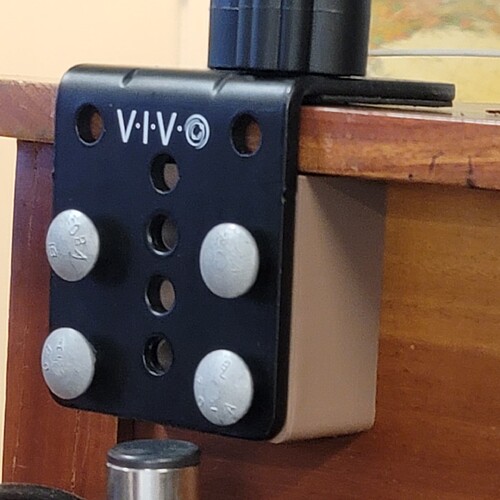I am making what I call a shim but is a block to allow me to bolt a flat aluminum casting to an table with a typical overhang of about 1" - 2".
This block will have three bolt holes that run right through the cube.
How many wall loops is appropriate to prevent crushing? I am not going to use an impact wrench or anything like that but I think it probably needs to be beefed up some.
The answer depends a lot on what the relative sizes are, the size of the bolts and the weight placed on the part.
If the bolts are small, two will be fine, unless they are massive I would not expect more than five being needed.
Fewer wall counts are more often fine.
If you have more details, feel free to share.
Remember, top and bottom surface count in the equation, especially if there is a potential of twisting between the part and the structure it is affixed to.
Remember, you create the void (hole in the part) to which the bolt goes through. If you are using the thread of the bolt to bit into the hole to bind the two p, use a diameter equal to the bolt diameter minus the thread.
At this point, you can use the thread thickness to help determine how many wall are required, the thicker the thread, the larger number of walls required.
If you use an M3 bolt, a 3mm void should be created and two walls would be fine.
Remember, you can add modifiers to your model and you can set the wall counts to that area specifically. You do nit need to set the wall counts uniformly.
This is the first one I made.
6 3/8 nuts, bolts, washers.
The load is a 22" monitor on an arm.
This is conceptually the same but different plate dimensions, 3 bolts, 5/16, load is keyboard and keyboard platform.
A little side note on why. I have started messing around with Fusion and my laptop doesn’t like Fusion. So big PC and need support for monitor and keyboard that can accommodate my physical issues.
Most of the load is on the desk, the “shim” load is only if the monitor stand is pushed backwards.
My guess would be 4 walls would be more than sufficent.
Looks from the picture there is a gap between the desk and the plate that sits on it which would increase the flex loading on the block. I’d see if you can get it sitting lower or pack it with spacers.
If you are talking about this gap, There is a rubber pad under the plate.
The angle is also slightly greater than 90° and it also is a radius bend. To get the top section flat, you have to scoot the 90° out some. Best compromise I could come up with.
Looks to me what you have there should be fine what material are you using?
Bambu Lab Basic PLA
Some of this is also me trying to teach myself Fusion.
Thanks.
As far as materials, do you happen to know where I can find a chart (ideally) or text content that gets into hardness/compressability of the different mainstream filaments?
I need to make a bushing and some washers that will have minimal squish when tightening a nut against them.
If you are talking washers, you can ignore any solid materials: PLA, PETG, ASA, ABS and so on.
You need a flexible material.
Before anyone suggests PETG, that is not flexible, it just has higher tolerance to stress, not suitable for compression in washers.
TPU is your friend.
TPU95A will do nicely, if you want it harder, with a little give, TPU for AMS is far more suited. It has some give, but out of all the materials, it is the easiest to print and retains some flexibility.
You asked for a chart for hardness, if you mean one in context of your question (as hardness on non-flexible materials is irrelevant), the the shore scale is your friend.
TPU materials are on the shore scale.
Based on what BL sells, and from soft to hard:
- TPU85A
- TPU90A
- TPU95A/TPU95A HF (HF is just quicker to print)
- TPU for AMS (68D)
TPU for AMS - doesn’t actually require an AMS, it can be printed without one, it is just the only one that can be printed with one as it is hard enough nor to get stuck. It can also be swapped in the same layer unlike any of the others.
TPU85A and TPU90A are much harder to print and you need to folow the BL guide to achieve it.
I need something that will provide long-term durability.
When I go at the jam nut & bolt with sockets I want to be able still swing around the bolt long axis but be very resistant to that rotation.
I am modifying a keyboard tray and arm assembly and the washers that came with it seemed similar to solid PTFE.
I have not seen any filament that was PTFE or PTFE-like. Not to say it does not exist, just that I have not seen it.
Without a picture or link, this is a guess.
Nylon is probably closest to PTFE tubes.
Yet, this doesn’t match your need via 3D printing
If you need to replace a washer and you need some compression, TPU for AMS still seems like the best choice.


